For all the gardeners who might be curious about the bees, and perhaps just want to enjoy the bees a little more, here are some interesting tidbits from BeeRad:
- We now have 7 hives. We’re planning to add one more, for a total of 8.
- It’s generally OK to approach a hive from THE SIDE (not from the front or rear). Approach slowly. You’ll hear them buzzing, and likely be able to see them bring in pollen as they enter (little balls on their hind legs). If they repeatedly buzz near your head, slowly walk away. Don’t swat at them, or you’ll definitely be stung!
- The boxes on each hive are called ‘Deeps’. Generally we place two, stacked on top of each other. If we stack additional ones, they are called ‘Supers’ – these are not quite as tall. Supers are the ones we harvest honey from. We have two hives currently with Supers, and we hope to harvest honey at the end of the summer.
- In another month, each hive will have ~ 50,000 bees. So we’ll have 400k bees in the apiary!
- Bees travel up to a couple of miles foraging, primarily gathering water, nectar, pollen and propolis (sap). The running water in the gulch provides plenty of accessible water.
- It’s swarm and mating season! Queen bees leave the hive once and mate with 5-10 different males in mid air, then return to the hive carrying all the semen in an internal sac. She then dispenses the semen as she lays the eggs the rest of the summer. She’ll lay 1000 eggs/day! If she fertilizes the egg, it will develop into a female. Unfertilized eggs develop into males (‘drones’). Approximately 90% of the bees are female. Males don’t do anything but mate once (if they’re lucky), and then die. Females do everything in the hive, from caring for the young, producing wax, making honey, feeding the queen, and foraging.
- Interested in more? The bee committee would be happy to put on an educational class for interested gardeners. Let the Leadership team know if you are interested.
Check out these cool pictures!
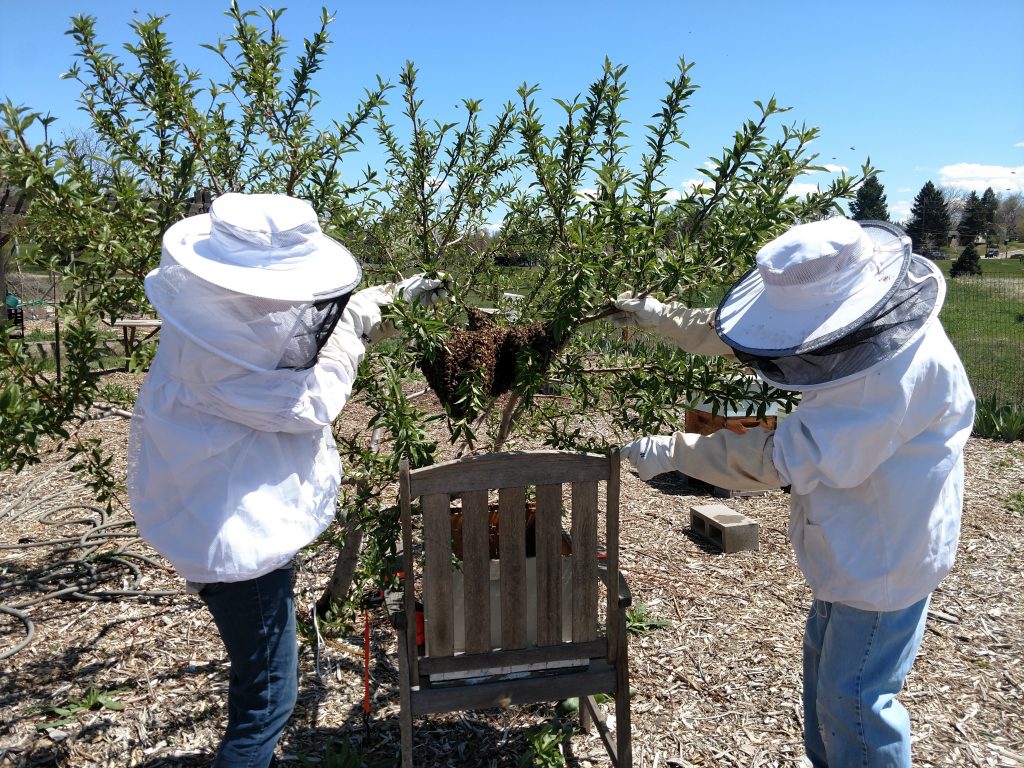
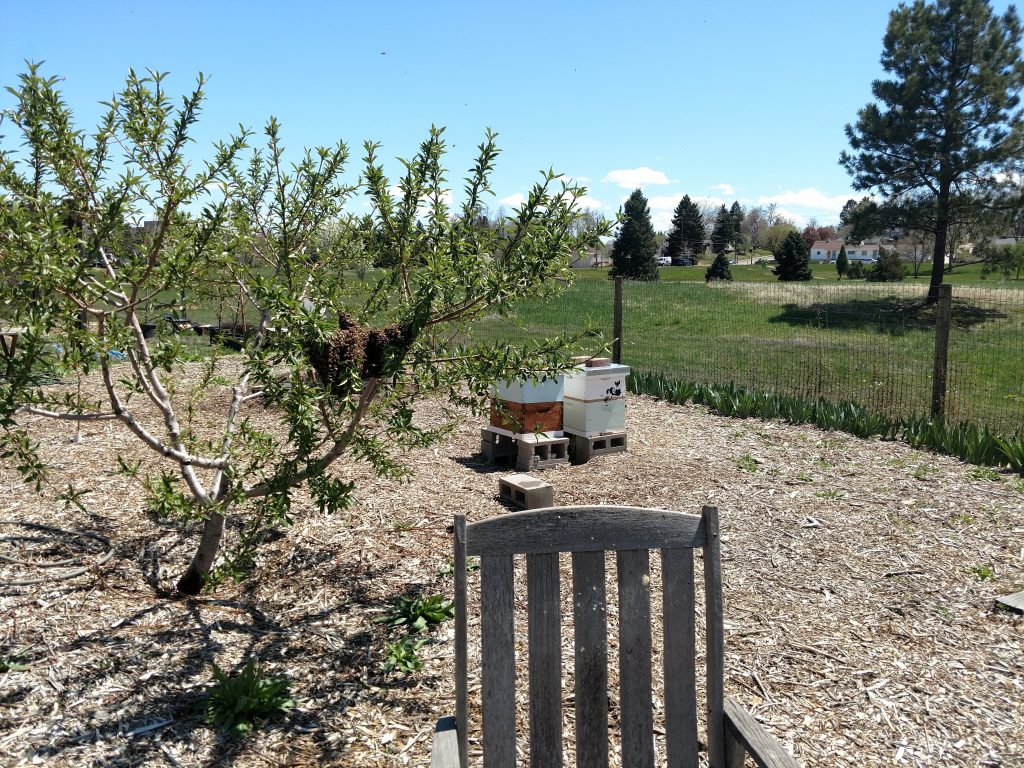
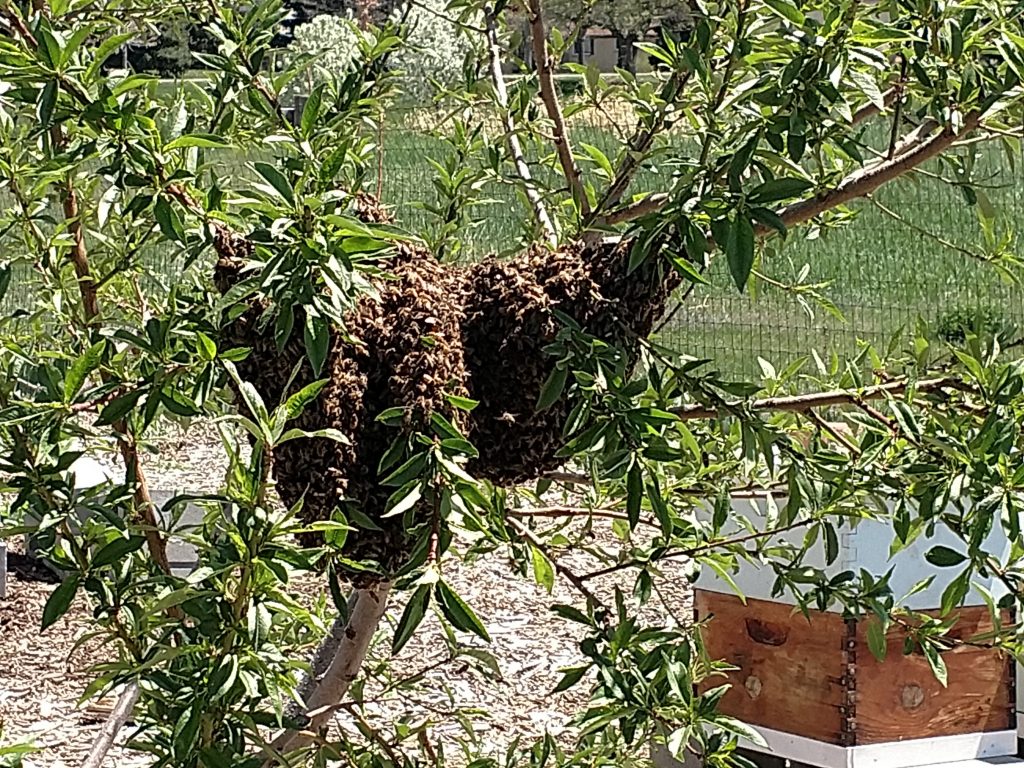
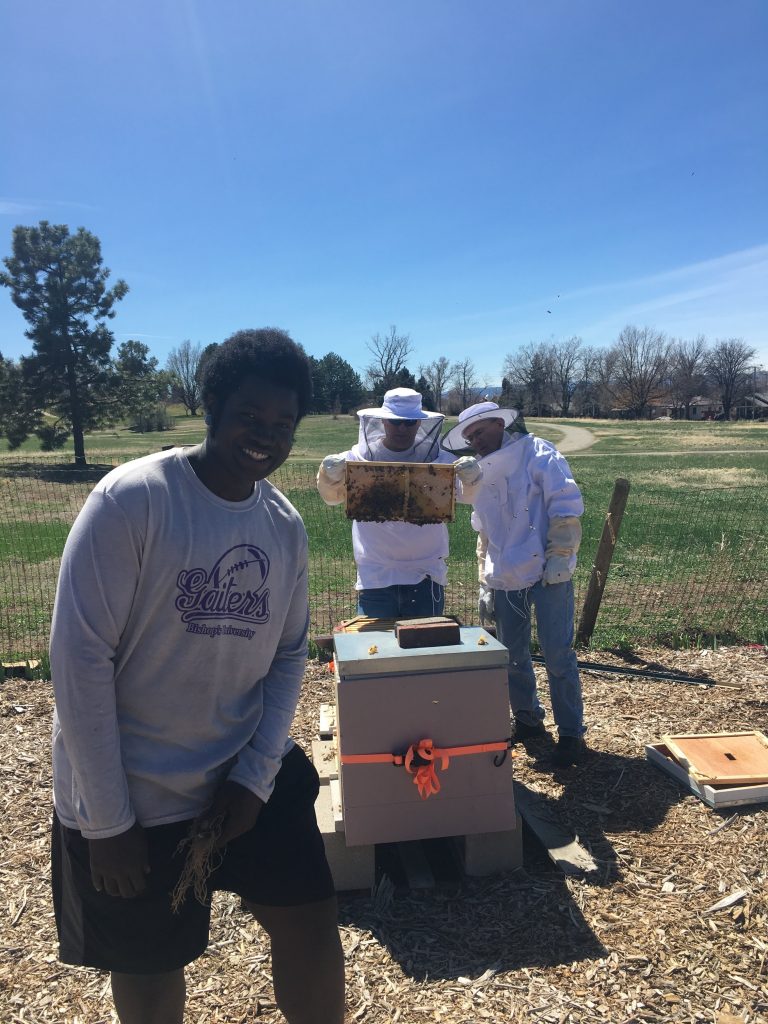
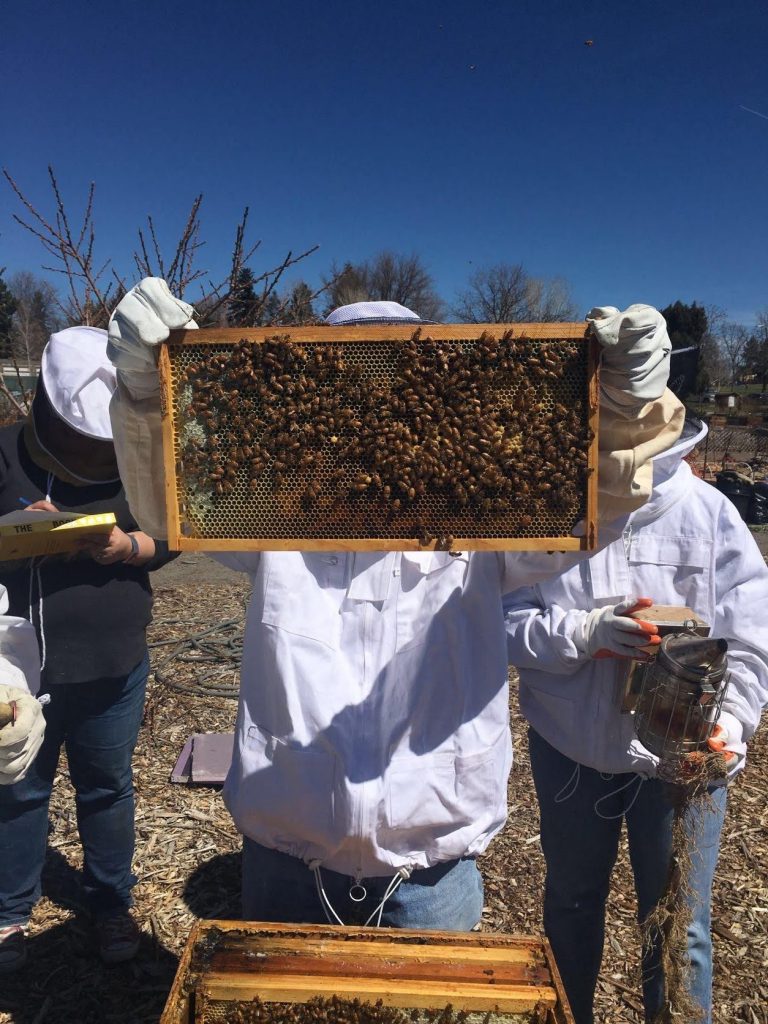
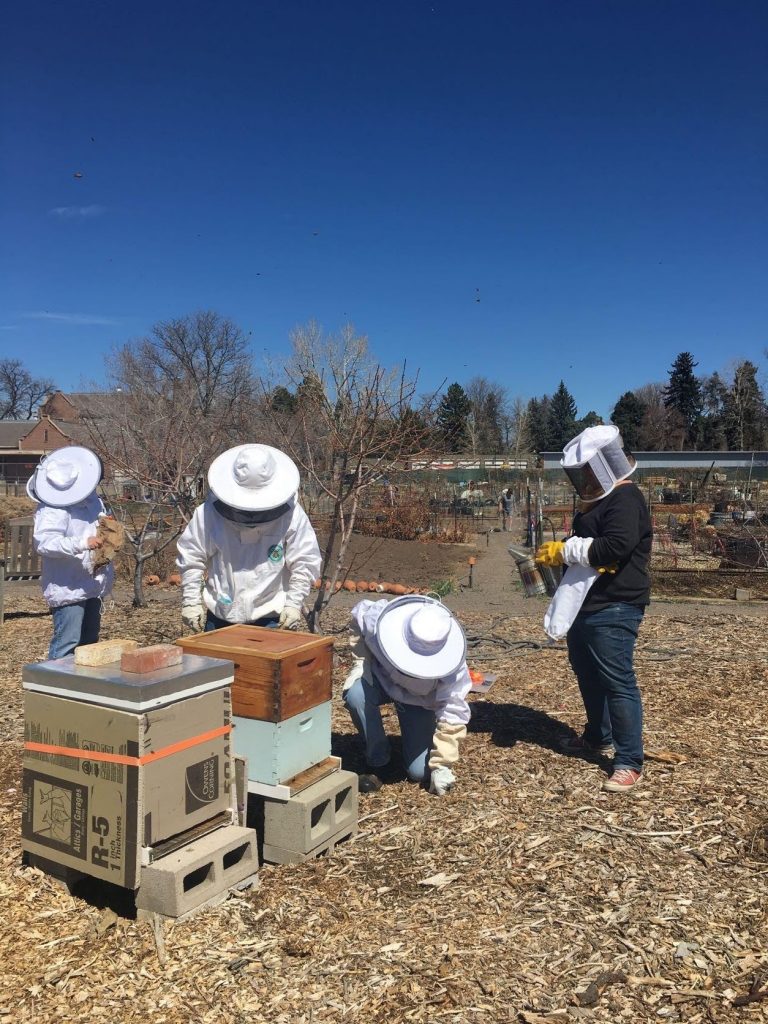
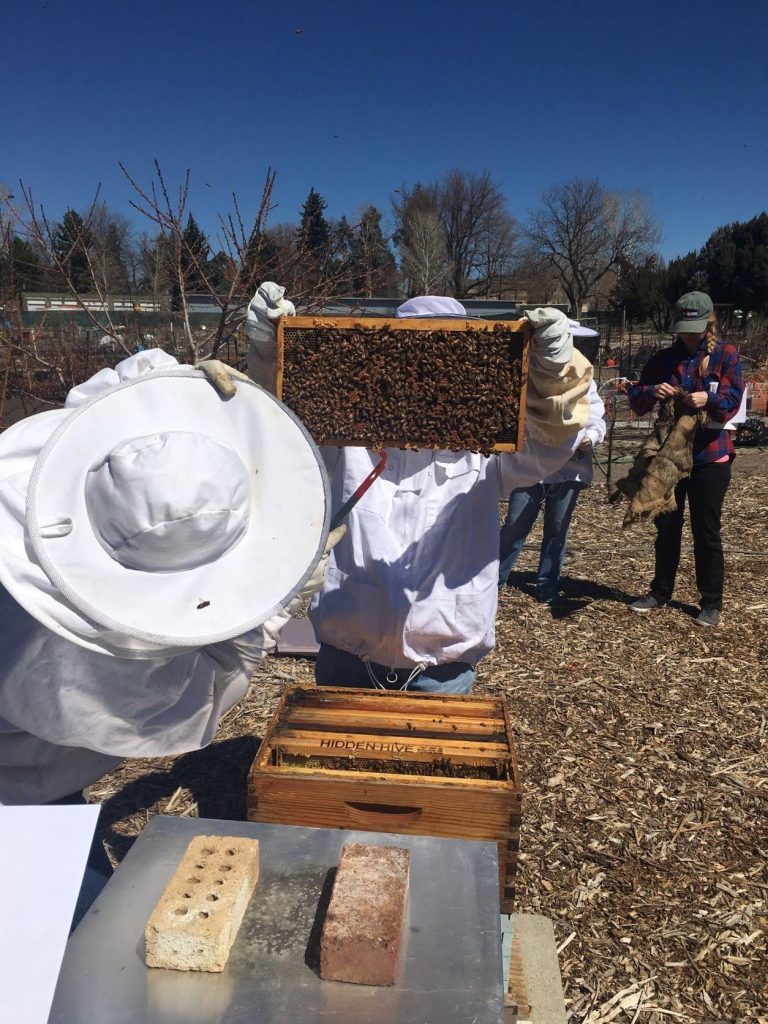
Comments are closed